What should Lisa do in this situation? Formulate response

Purchasing Ethics. – Read the case and answer all questions at end of each of the 4 scenarios.
Purchasing Ethics Scenario 1
Bryan Janz was just arriving back from lunch when his office phone rang. It was his wife, Nina, calling from home. Nina told Bryan that FedEx had just delivered a package addressed to her. The package contained a beautiful clock, now sitting over the fireplace. In fact, Nina said, “the clock looks absolutely beautiful on our living room fireplace:’ Thinking the clock was from a family member, Bryan asked who sent the present. She said she did not recognize the name-the clock was from Mr. James McEnroe. Bryan immediately told Nina that she had to repack the clock because it was from a supplier who had been trying to win business from Bryan’s company. They definitely could not accept the clock. Nina was very upset and responded that the clock was perfect for the. room and, besides, the clock came to their home, not to Bryan’s office. Because of Nina’s attachment to the clock, Bryan was unsure about what to do.
Check out another task that our paper writing services have assisted another student on the Discussion board reply
PURCHASING ETHICS ASSIGNMENT QUESTIONS WITH EXPERT ANSWERS
1. What should Bryan do about the clock?
Bryan should follow his company’s code of ethics regarding accepting gifts from suppliers. If the code of ethics prohibits accepting gifts from suppliers, then Bryan should return the clock to the supplier with a polite note explaining the company’s policy. If the policy allows for gifts of a certain value or type, Bryan should check if the clock falls within the permissible limit and report the gift to his company’s ethics officer for documentation purposes. In any case, Bryan should not keep the clock and should not let personal preferences override his obligation to follow the company’s ethical guidelines.
2. What does the Institute of Supply Management (ISM) code of ethics say about accepting supplier favors and gifts?
The ISM code of ethics states that procurement professionals should avoid accepting gifts or favors that could influence their professional judgment or create a conflict of interest. The code specifies that gifts or favors of more than nominal value or that create an appearance of impropriety are prohibited. The code also advises procurement professionals to disclose gifts received from suppliers to their employers and to avoid giving suppliers preferential treatment in exchange for gifts.
3. Why do you think the supplier sent the clock to Bryan’s home and addressed it to his wife?
It is possible that the supplier sent the clock to Bryan’s home and addressed it to his wife to bypass the company’s gift policies and to create a sense of obligation or indebtedness on a personal level. Sending a gift to an employee’s home could also be a tactic to create a personal relationship with the employee outside of a professional setting. By addressing the gift to Bryan’s wife, the supplier may have hoped to appeal to her sense of aesthetics and persuade her to influence Bryan to favor the supplier’s company in future business dealings.
4. Does the mere act of sending the clock to Bryan mean that Mr. McEnroe is an unethical salesperson?
Not necessarily. It is possible that Mr. McEnroe was unaware of Bryan’s company’s gift policy or that he believed the clock to be of nominal value. However, if Mr. McEnroe knew or should have known that the gift violated the company’s code of ethics and sent it anyway with the intention of creating undue influence or obligation, then he would be acting unethically. The context, intent, and potential impact of the gift are important factors to consider when determining whether the gift is unethical.
Purchasing Ethics Scenario 2
Lisa Jennings thought that at long last, her company, Assurance Technologies, was about to win a major contract from Sealgood Instruments. Sealgood, a maker of precision measuring instruments, was sourcing a large contract for component subassemblies. The contract that Assurance Technologies was bidding on was worth at least $2.5 million annually, a significant amount given Assurance’s annual sales of $30 million. Her team had spent hundreds of hours preparing the quotation and felt they could meet Sealgood’s requirements in quality, cost, delivery, part standardization, and simplification. In fact, Lisa had never been more confident about a quote meeting the demanding requirements of a potential customer.
Troy Smyrna, the buyer at Sealgood Instruments responsible for awarding this con tract, called Lisa and asked to meet with her at his office to discuss the specifics of the contract. When she arrived, Lisa soon realized that the conversation was not going exactly as she had expected. Troy informed Lisa that Assurance Technologies had indeed prepared a solid quotation for the contract. However, when he visited Assurance’s facility earlier on a prequalifying visit, he was disturbed to see a significant amount of a competitor’s product being used by Assurance. Troy explained his uneasiness with releasing part plans and designs to a company that clearly had involvement with a competitor. When Lisa asked what Assurance could do to minimize his uneasiness, Troy replied that he would be more comfortable if Assurance no longer used the competitor’s equipment and used
Cases
Sealgood’s equipment instead. Lisa responded that this would mean replacing several hundred thousand dollars worth of equipment. Unfazed, Troy simply asked her whether or not she wanted the business. Lisa responded that she needed some time to think and that she would get back to Troy in a day or so.
You can find more paper writing tips and examples, such as understanding how to get better at writing papers, in another article.
PURCHASING ETHICS ASSIGNMENT
1. Do you think the buyer at Sealgood Instruments, Troy Smyrna, is practicing unethical behavior? First, what is the term for this behavior, and second, defend why you think it is ethical or unethical behavior.
The behavior exhibited by Troy Smyrna is commonly referred to as “buying influence” or “kickbacks.” It is unethical behavior where a purchasing agent or a buyer demands something of value from a supplier in exchange for a favorable treatment, such as awarding a contract. In this scenario, Troy Smyrna is demanding that Assurance Technologies replace its competitor’s equipment with Sealgood’s equipment to ensure the contract’s award. While this behavior may be common in business, it is unethical because it is not based on the merits of the supplier’s product or service. Instead, it is based on an agreement to provide something of value in exchange for a favorable outcome. Therefore, Troy’s behavior is unethical.
2. What should Lisa do in this situation? Formulate a response.
Lisa should first consult with her supervisor and the company’s legal team before responding to Troy Smyrna’s request. If it is determined that Troy’s request is an attempt to obtain a kickback, Lisa should not comply with the request and should report the matter to the appropriate authorities. However, if it is determined that the use of Sealgood’s equipment is reasonable and necessary for the contract’s fulfillment, Lisa should negotiate with Troy to minimize the costs of the equipment replacement or explore alternative solutions that would address his concerns without incurring significant expenses. Lisa should also ensure that any agreements with Sealgood are based solely on the merits of Assurance’s product and service, and not on any demands for kickbacks or other unethical behavior.
Purchasing Ethics Scenario 3
Ben Gibson, the purchasing manager at Coastal Products, was reviewing purchasing expenditures for packaging materials with Jeff Joyner. Ben was particularly disturbed about the amount spent on corrugated boxes purchased from Southeastern Corrugated. Ben said, “I don’t like the salesman from that company. He comes around here acting like he owns the place. He loves to tell us about his fancy car, house, and vacations. It seems to me he must be making too much money off of us!” Jeff responded that he heard Southeastern Corrugated was going to ask for a price increase to cover the rising costs of raw material paper stock. Jeff further stated that Southeastern would probably ask for more than what was justified simply from rising paper stock costs.
After the meeting, Ben decided he had heard enough. After all, he prided himself on being a results-oriented manager. There was no way he was going to allow that salesman to keep taking advantage of Coastal Products. Ben called Jeff and told him it was time to rebid the corrugated contract before Southeastern came in with a price increase request. Who did Jeff know that might be interested in the business? Jeff replied he had several companies in mind to include in the bidding process. These companies would surely come in at a lower price, partly because they used lower-grade boxes that would probably work well enough in Coastal Products’ process. Jeff also explained that these suppliers were not serious contenders for the business. Their purpose was to create competition with the bids. Ben told Jeff to make sure that Southeastern was well aware that these new suppliers were bidding on the contract. He also said to make sure the suppliers knew that price was going to be the determining factor in this quote, because he considered corrugated boxes to be a standard industry item.
PURCHASING ETHICS ASSIGNMENT
1. Is Ben Gibson acting legally? Is he acting ethically? Why or why not?
Ben Gibson’s actions raise ethical concerns. He is intentionally seeking to replace a supplier solely based on his personal dislike for their sales representative and his assumption that the supplier is making too much profit. He is also encouraging the use of lower-grade boxes, which may not meet the quality standards required by Coastal Products, in order to reduce costs. Ben’s behavior violates the principles of fairness, transparency, and honesty, which are key to ethical purchasing practices.
Furthermore, Ben’s actions may not be illegal, but they are not in the best interest of Coastal Products. By intentionally seeking to replace Southeastern Corrugated without proper justification, Ben is putting the company at risk of receiving lower-quality products and services, which can impact the company’s reputation and profitability.
2. As the Marketing Manager for Southeastern Corrugated, what would you do upon receiving the request for quotation from Coastal Products?
Upon receiving the request for quotation from Coastal Products, the Marketing Manager for Southeastern Corrugated should carefully review the bid and determine whether it is feasible to offer a competitive price. If the rising cost of raw materials has impacted the price, the company should provide evidence to support the price increase. It is also important to maintain professionalism and not allow personal biases to affect the bidding process.
If Southeastern Corrugated is confident in its ability to provide quality products and services at a competitive price, it should participate in the bidding process. The company can also reach out to Coastal Products to discuss any concerns they may have regarding pricing or quality. However, if Southeastern Corrugated believes that the bidding process is being manipulated or is not fair, they may choose not to participate in the bid.
Regardless of the outcome of the bidding process, Southeastern Corrugated should focus on maintaining a positive relationship with Coastal Products by providing excellent customer service, quality products, and fair pricing. This will help to ensure that the company remains a preferred supplier for Coastal Products in the future.
Cases
Purchasing Ethics Scenario 4
Sharon Gillespie, a new buyer at Visionex, Inc., was reviewing quotations for a tooling contract submitted by four suppliers. She was evaluating the quotes based on price, target quality levels, and delivery lead time promises. As she was working, her manager, Dave Cox, entered her office. He asked how everything was progressing and if she needed any help. She mentioned she was reviewing quotations from suppliers for a tooling contract. Dave asked who the interested suppliers were and if she had made a decision. Sharon indicated that one supplier, Apex, appeared to fit exactly the requirements Visionex had specified in the proposal. Dave told her to keep up the good work.
Later that day Dave again visited Sharon’s office. He stated that he had done some re search on the suppliers and felt that another supplier, Micon, appeared to have the best track record with Visionex. He pointed out that Sharon’s first choice was a new supplier to Visionex and there was some risk involved with that choice. Dave indicated that it would please him greatly if she selected Micron for the contract.
The next day Sharon was having lunch with another buyer, Mark Smith: She mentioned
the conversation with Dave and said she honestly felt that Apex was the best choice. When i
Mark asked Sharon who Dave preferred, she answered, “Micron:’ At that point Mark rolled I !
his eyes and shook his head. Sharon asked what the body language was all about. Mark replied, “Look, I know you’re new but you should know this. I heard last week that Dave’s brother-in-law is a new part owner of Micron. I was wondering how soon it would be be fore he started steering business to that company. He is not the straightest character:’ Sharon was shocked. After a few moments, she announced that her original choice was still the best selection. At that point Mark reminded Sharon that she was replacing a terminated buyer who did not go along with one of Dave’s previous preferred suppliers.
PURCHASING ETHICS ASSIGNMENT
1. What does the Institute of Supply Management code of ethics say about financial conflicts of interest
The Institute of Supply Management (ISM) code of ethics states that purchasing professionals should avoid any financial conflicts of interest that could compromise their objectivity and impartiality in the procurement process. This includes not accepting any gifts, favors, or other forms of compensation from suppliers that could influence their purchasing decisions. Additionally, purchasing professionals should disclose any potential conflicts of interest to their employer and take appropriate steps to mitigate any conflicts.
2. Ethical decisions that affect a buyer’s ethical perspective usually involve the organizational environment, cultural environment, personal environment, and industry environment. Analyze this scenario using these four variables.
- Organizational environment: The actions of Dave Cox, Sharon’s manager, suggest a culture in which personal relationships and preferences take precedence over objective criteria in supplier selection. This environment can create a perception of unfairness and favoritism among suppliers and damage the company’s reputation.
- Cultural environment: The culture of the purchasing department and the company as a whole can influence ethical decision-making. If the culture prioritizes profit over ethical behavior, individuals may be more likely to engage in unethical conduct to achieve their goals.
- Personal environment: Sharon’s personal values and beliefs may influence her ethical decision-making in this scenario. Her commitment to ethical behavior and her desire to do what is best for the company may conflict with pressure from her manager to select a preferred supplier.
- Industry environment: The competitive nature of the industry and the pressure to reduce costs and increase efficiency can create a climate in which unethical behavior, such as favoritism and conflict of interest, can be more prevalent.
3. What should Sharon do in this situation?
Sharon should act in accordance with her ethical principles and professional responsibilities as a purchasing professional. She should not allow personal relationships or pressure from her manager to influence her supplier selection decision. Instead, she should base her decision on objective criteria such as price, quality, and delivery lead time promises. If Sharon believes that Dave’s preference for Micron is driven by a conflict of interest, she should report her concerns to her supervisor or the company’s ethics hotline. It may also be appropriate for Sharon to request additional information or clarification from Dave regarding his reasons for preferring Micron. Ultimately, Sharon should strive to maintain her integrity and uphold the ethical standards of the profession.
You Can Complete Your Purchasing Ethics Assignment Written by Experts
Yes, you can have your purchasing ethics assignment written by experts.
ReliablePapers.com has a team of experienced writers who have in-depth subject knowledge and can produce high-quality assignments.
For guaranteed genuine deliveries, our expert assignment writers excel at conducting extensive research using credible sources.
Our commitment to high standards and complete customer satisfaction demonstrates that reliablepapers.com is the best place to get help with your assignments.
When students use reliablepapers.com, they can be sure that they will get high-quality paper writing help with any kind of academic paper.
Hire an Expert Paper Writer on Any Subject, Any Topic, Any Deadline! Submit your paper instructions by placing your order here to get started!





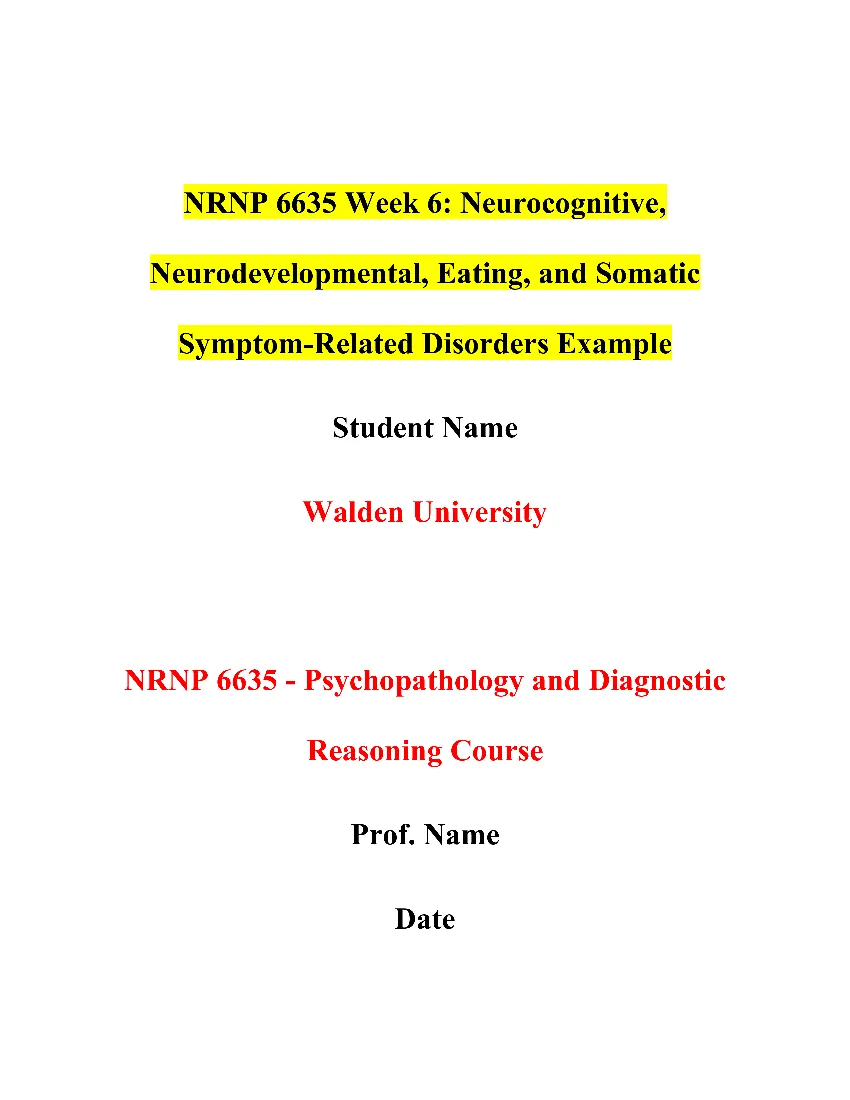 NRNP 6635 Week 6: Neurocognitive, Neurodevelopmental, Eating, and Somatic Symptom-Related Disorders Assignment
NRNP 6635 Week 6: Neurocognitive, Neurodevelopmental, Eating, and Somatic Symptom-Related Disorders Assignment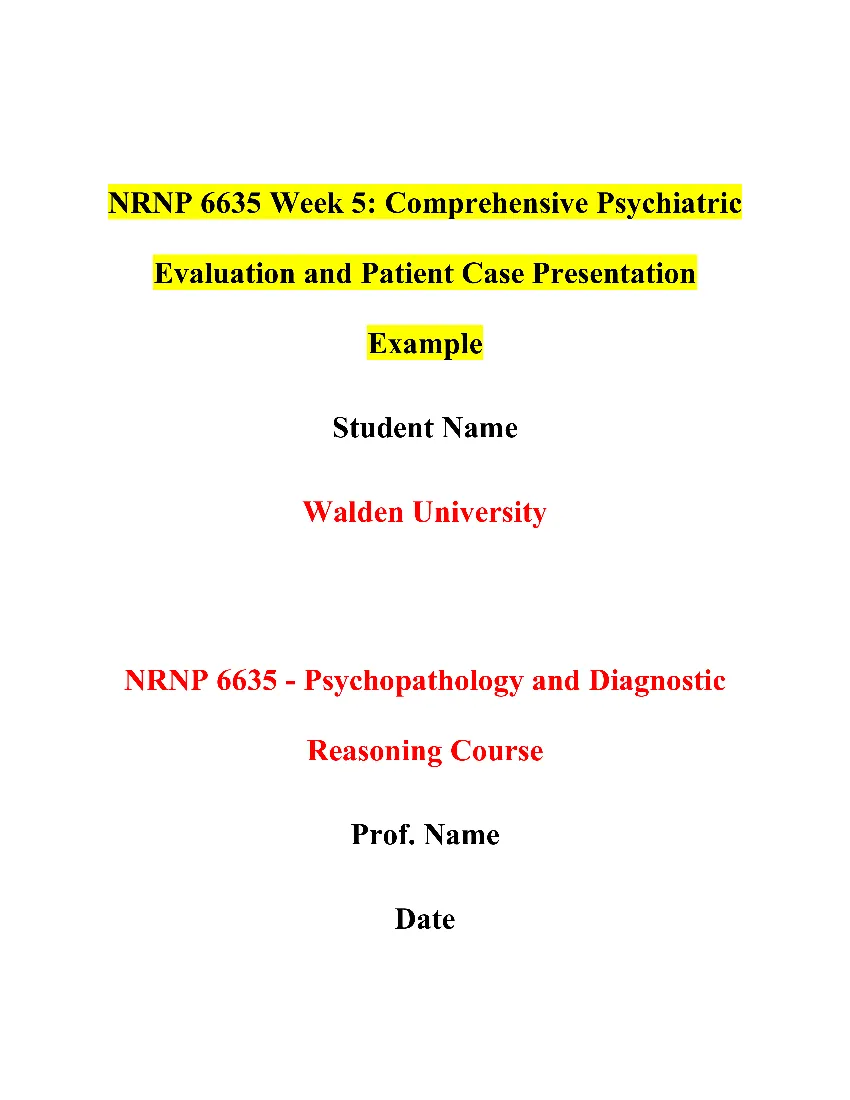 NRNP 6635 Week 5: Comprehensive Psychiatric Evaluation and Patient Case Presentation; Midterm Clinical Evaluation
NRNP 6635 Week 5: Comprehensive Psychiatric Evaluation and Patient Case Presentation; Midterm Clinical Evaluation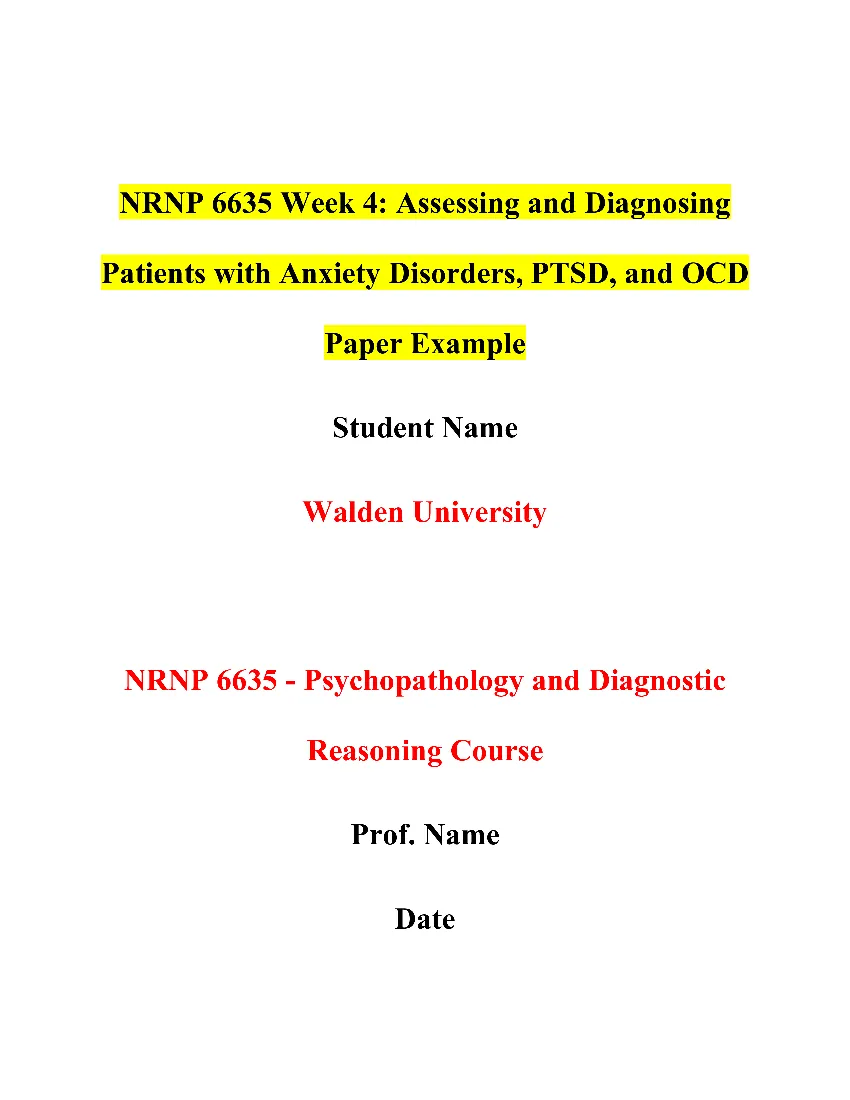 Assignment: Assessing and Diagnosing Patients With Anxiety Disorders, PTSD, and OCD
Assignment: Assessing and Diagnosing Patients With Anxiety Disorders, PTSD, and OCD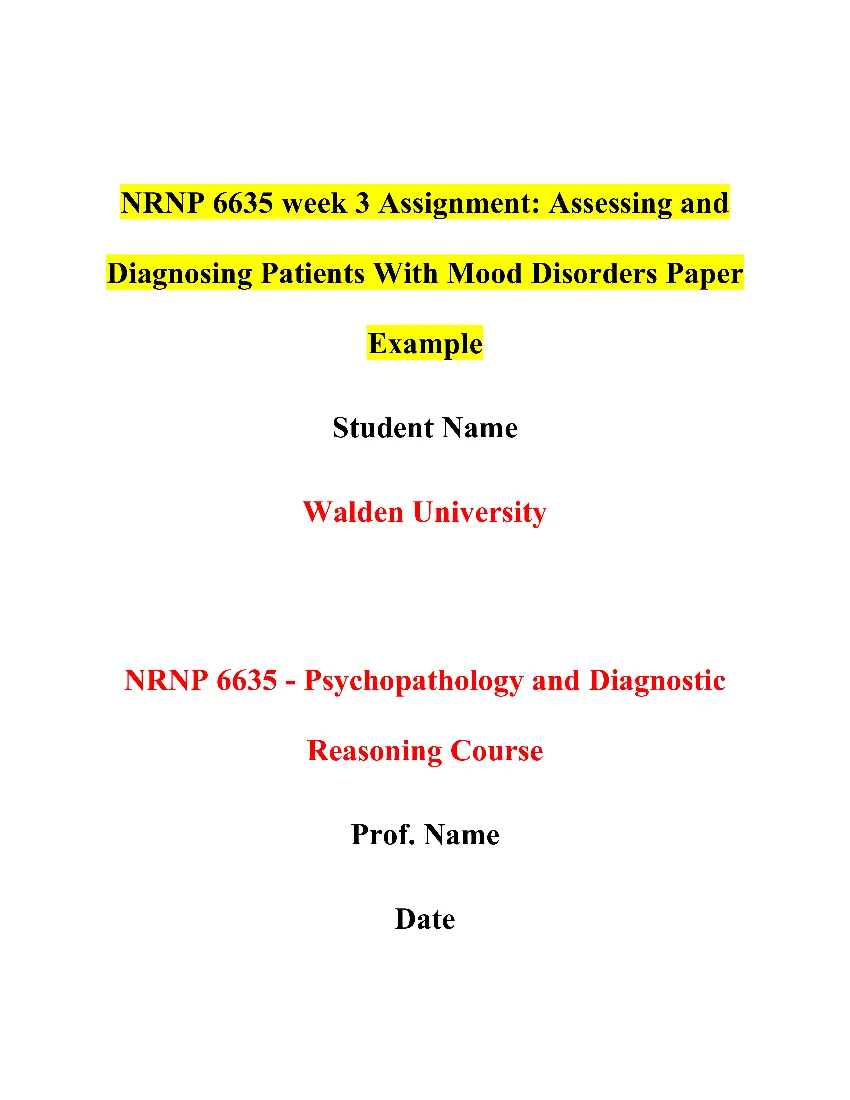 NRNP 6635 week 3 Assignment: Assessing and Diagnosing Patients With Mood Disorders Assignment
NRNP 6635 week 3 Assignment: Assessing and Diagnosing Patients With Mood Disorders Assignment Psychology homework help guarantee high grades and helps you meet all your academic needs.
Psychology homework help guarantee high grades and helps you meet all your academic needs.

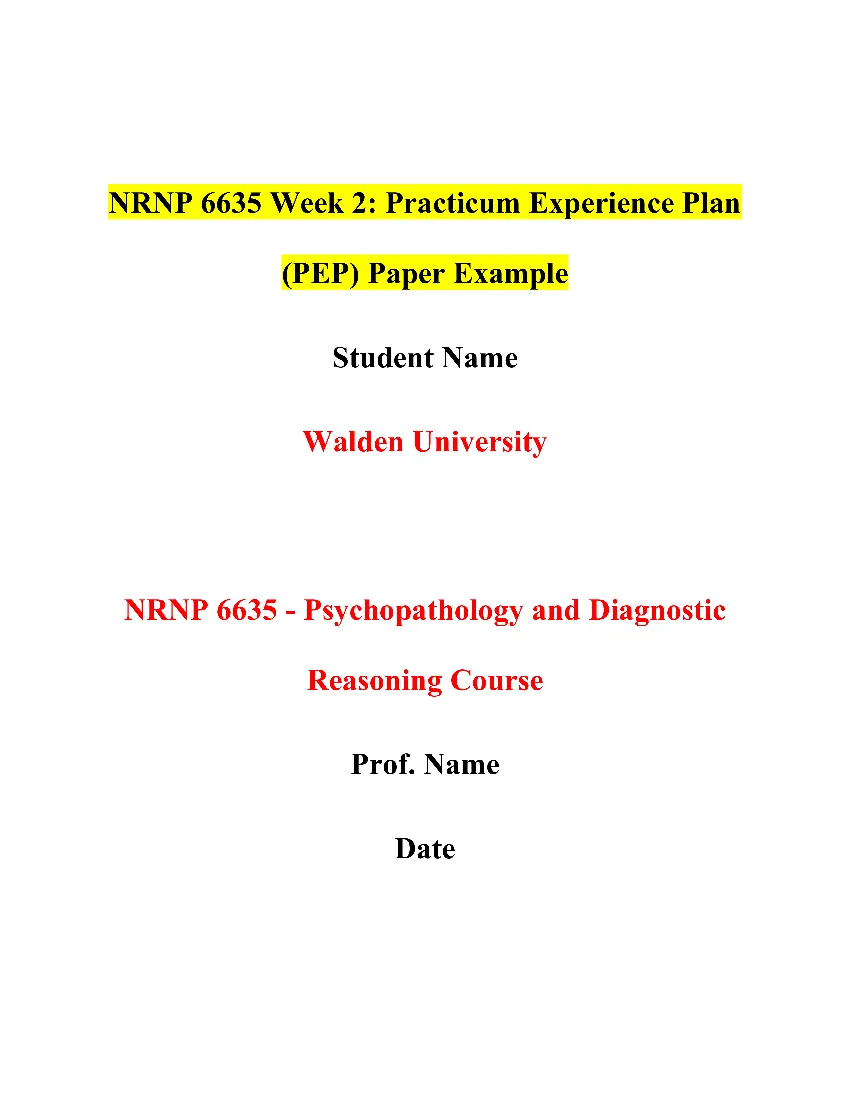 NRNP 6635 Week 2: Practicum Experience Plan (PEP) Paper Assignment
NRNP 6635 Week 2: Practicum Experience Plan (PEP) Paper Assignment